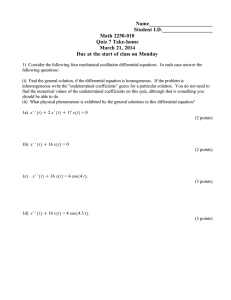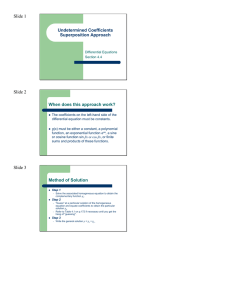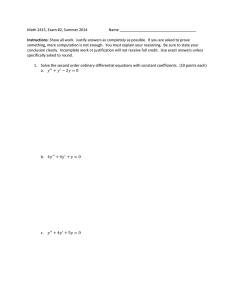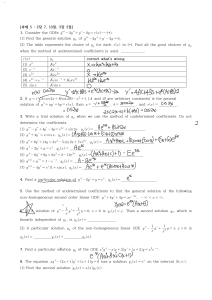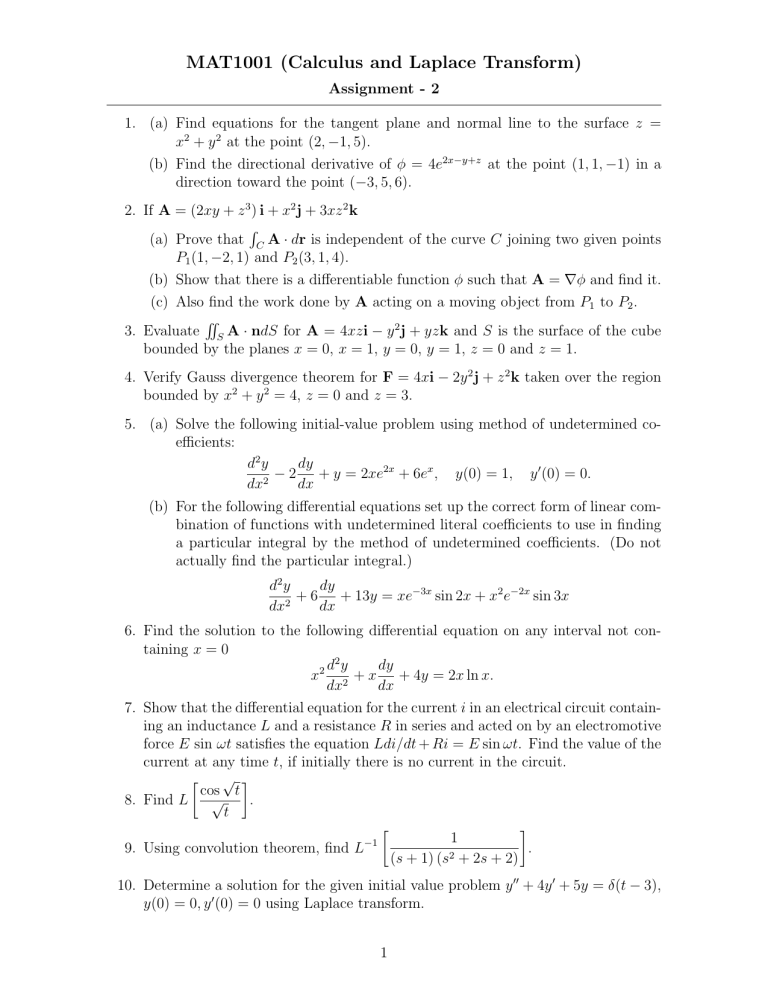
MAT1001 (Calculus and Laplace Transform) Assignment - 2 1. (a) Find equations for the tangent plane and normal line to the surface z = x2 + y 2 at the point (2, −1, 5). (b) Find the directional derivative of φ = 4e2x−y+z at the point (1, 1, −1) in a direction toward the point (−3, 5, 6). 2. If A = (2xy + z 3 ) i + x2 j + 3xz 2 k ´ (a) Prove that C A · dr is independent of the curve C joining two given points P1 (1, −2, 1) and P2 (3, 1, 4). (b) Show that there is a differentiable function φ such that A = ∇φ and find it. (c) Also find the work done by A acting on a moving object from P1 to P2 . ˜ 3. Evaluate S A · ndS for A = 4xzi − y 2 j + yzk and S is the surface of the cube bounded by the planes x = 0, x = 1, y = 0, y = 1, z = 0 and z = 1. 4. Verify Gauss divergence theorem for F = 4xi − 2y 2 j + z 2 k taken over the region bounded by x2 + y 2 = 4, z = 0 and z = 3. 5. (a) Solve the following initial-value problem using method of undetermined coefficients: dy d2 y − 2 + y = 2xe2x + 6ex , y(0) = 1, y 0 (0) = 0. 2 dx dx (b) For the following differential equations set up the correct form of linear combination of functions with undetermined literal coefficients to use in finding a particular integral by the method of undetermined coefficients. (Do not actually find the particular integral.) dy d2 y + 6 + 13y = xe−3x sin 2x + x2 e−2x sin 3x 2 dx dx 6. Find the solution to the following differential equation on any interval not containing x = 0 dy d2 y x2 2 + x + 4y = 2x ln x. dx dx 7. Show that the differential equation for the current i in an electrical circuit containing an inductance L and a resistance R in series and acted on by an electromotive force E sin ωt satisfies the equation Ldi/dt + Ri = E sin ωt. Find the value of the current at any time t, if initially there is no current in the circuit. √ cos t √ . 8. Find L t 1 −1 9. Using convolution theorem, find L . (s + 1) (s2 + 2s + 2) 10. Determine a solution for the given initial value problem y 00 + 4y 0 + 5y = δ(t − 3), y(0) = 0, y 0 (0) = 0 using Laplace transform. 1

